How were gays and lesbians viewed and treated by the U.S. government?

Students will study the treatment of gay and lesbian federal workers during the period of McCarthyism.

Instructional Resources for California Educators, Students, & Families

Students will study the treatment of gay and lesbian federal workers during the period of McCarthyism.
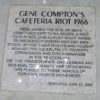
Students will learn about the Black Cat Tavern riots and the start of the gay rights movement.
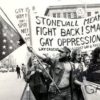
In this lesson, teachers will contextualize the LGBT rights movement by answering the question introduced in the History-Social Science Framework for California Public Schools: “How did various movements for equality build upon one another?” While activists fighting for LGBT rights utilized similar tactics and had some shared goals of those fighting for Civil Rights broadly, LGBT people in racial minority communities faced additional discrimination. Moreover, many fighting for broader Civil Rights did not consider sexual preference or gender identity as apart of their fight. In this lesson, students will explore historical perspectives to determine to what extent the movement for LGBT rights was or was not part of the broader movement for Civil Rights of the 1970s and 1980s. Students will read, annotate and categorize several primary sources to write a short essay describing and supporting their prospective with evidence from the texts.

In this lesson, students will engage in the historical context of the AIDS crisis of the 1980s exploring a timeline of major events and government responses to understand reasons for anger and unrest in the LGBT community. After establishing historical context, students will analyze activist responses looking specifically at different goals and methods used by the activist organization ACT-UP/Los Angeles.
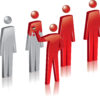
In this lesson students learn about the divers perspectives and organizations that shaped the movement for LGBTQ equality from the 1950s through the 1970s. Students will participate in a simulation where they play the role of members of specific, historically significant organizations that emerged in the LGBT movement between 1950-1970s, trying to form a united coalition and make decisions about the big political questions of the day. Students will have to collaborate to write and present statements that represent their organization’s perspective in a political conference that will last 3 rounds. In each round they will discuss and debate a major event/topic in the historical LGBT movement. Then they will vote on proposals. Ostensibly, the group will try to reach consensus but the goal is greater understanding of the arguments, experiences and material conditions that shaped the movement. This lesson aligns with LGBT history month and could be incorporated into a larger unit on the Civil Rights movement (understanding the mechanics of movement building, how oppressed groups achieved civil rights). Students will be able to: analyze the historical context and major political ideas in the movement for LGBT right between 1950-1975. Students will read, discuss and analyze primary and secondary source historical documents in small groups. Students will collaborate to write and orally present historical arguments in a simulated political conference.
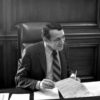
In this lesson, students will analyze the purpose of the Briggs Initiative (Prop 6), which was on the California general election ballot in 1978. The referendum sought to ban gays and lesbians, and potentially supporters of gays and lesbians, from working in California’s public schools. Then, students will evaluate voices of those opposed to the initiative by reading posters and flyers. Harvey Milk, the first openly gay elected official, was a key political figure that led the debate against people like Senator John Briggs and Anita Bryant. Additionally, the Briggs Initiative was challenged by other marginalized groups including African Americans, feminists, and unionists. Finally, students will conduct a close reading of Harvey Milk’s speech given after the defeat of the Briggs Initiative on June 25, 1978 at California’s Gay Freedom Day. The lesson may take 90-120 minutes depending on the reading level of students and the language support needed. To divide the lesson into two days, it is suggested that the close read be done on day 2.
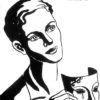
Students will experience strategies that will help them analyze primary sources, examine and use literacy strategies that will help them access primary sources, engage in close reading and text-based discussions in various settings including in pairs/groups and as a classroom and generate at least one writing task that is Common Core based.

In this lesson, students will learn about changes and continuities in the 1920s, particularly focused on cultural and social areas. Students will analyze primary and secondary sources that explore race, gender, and sexuality in the 1920s.